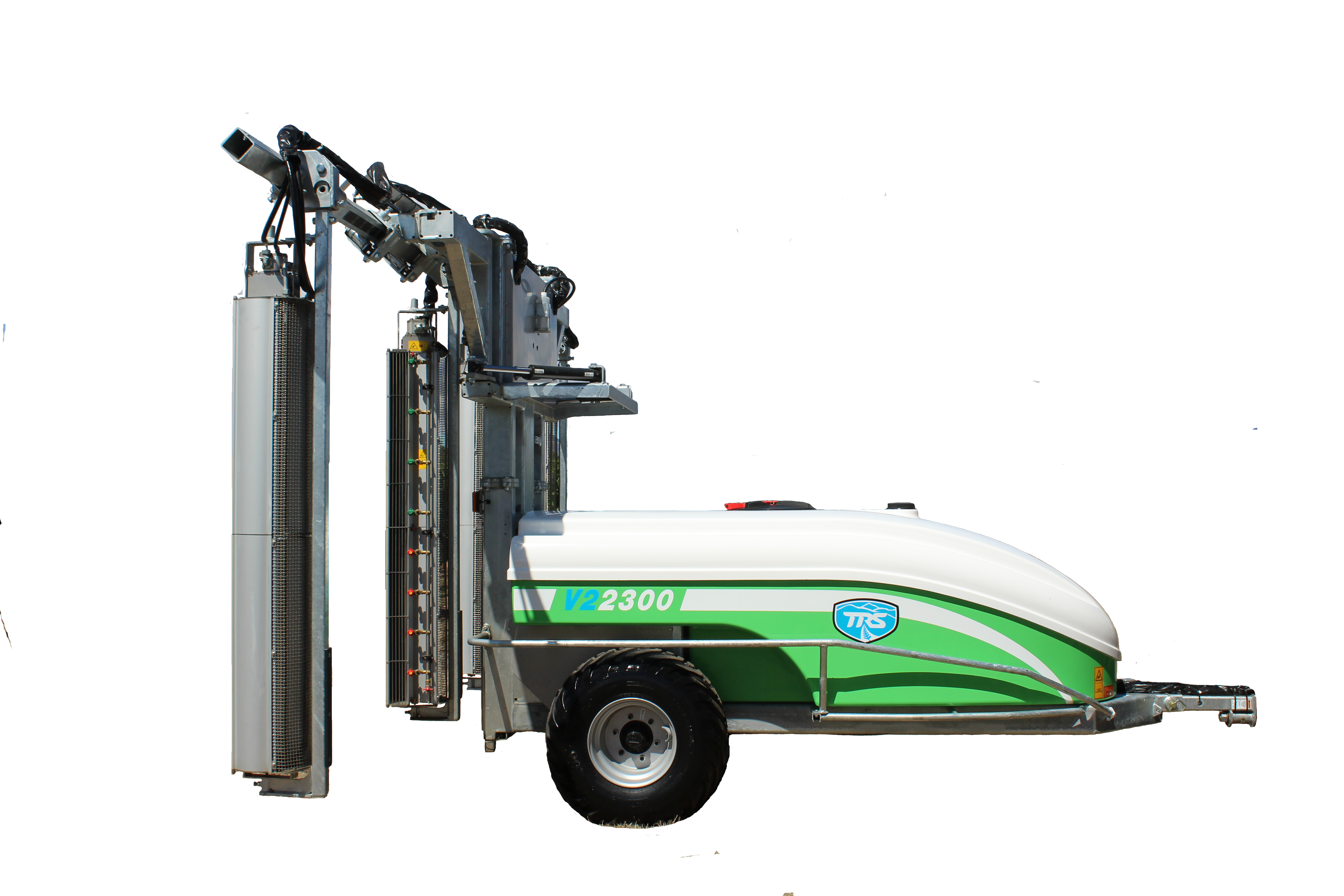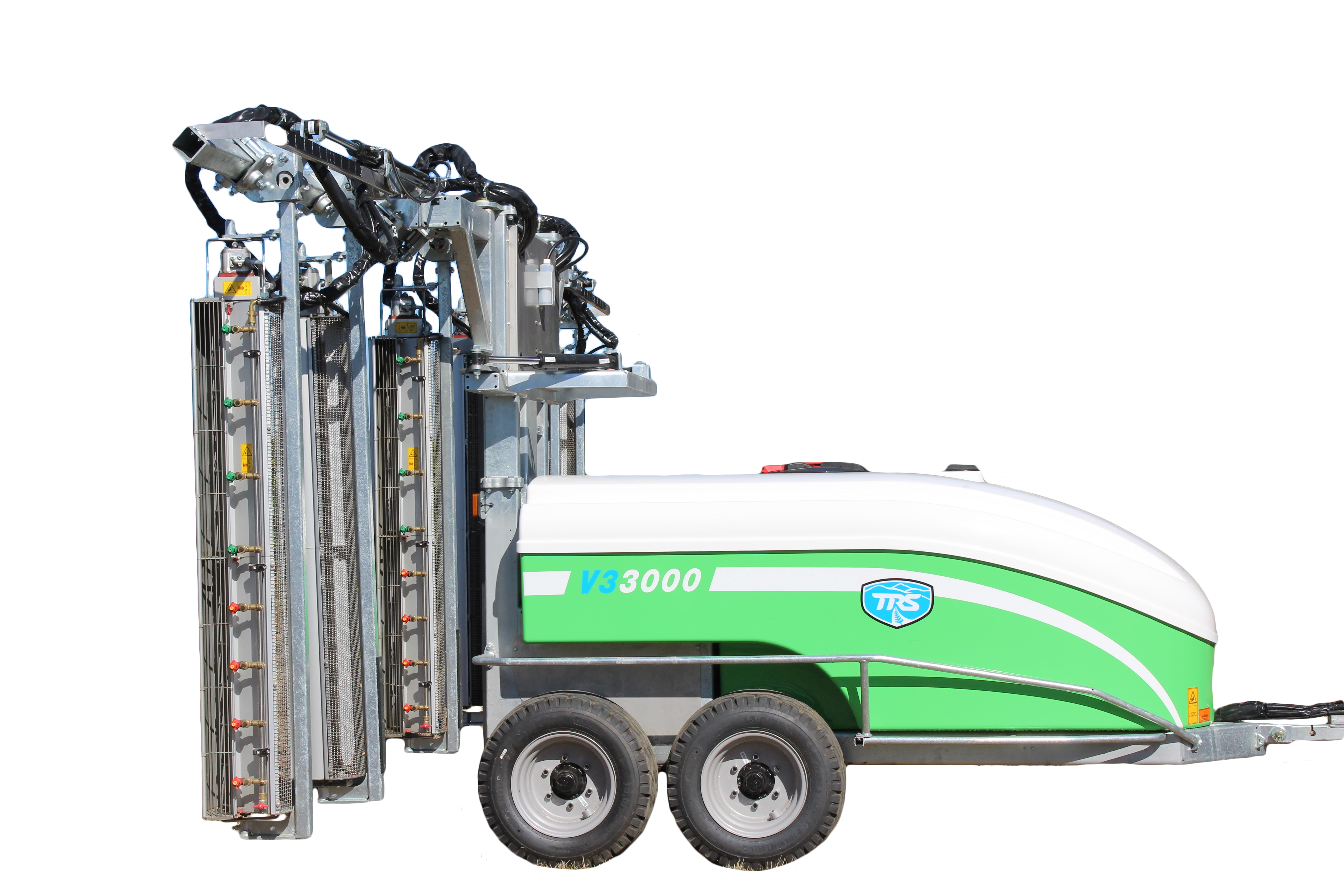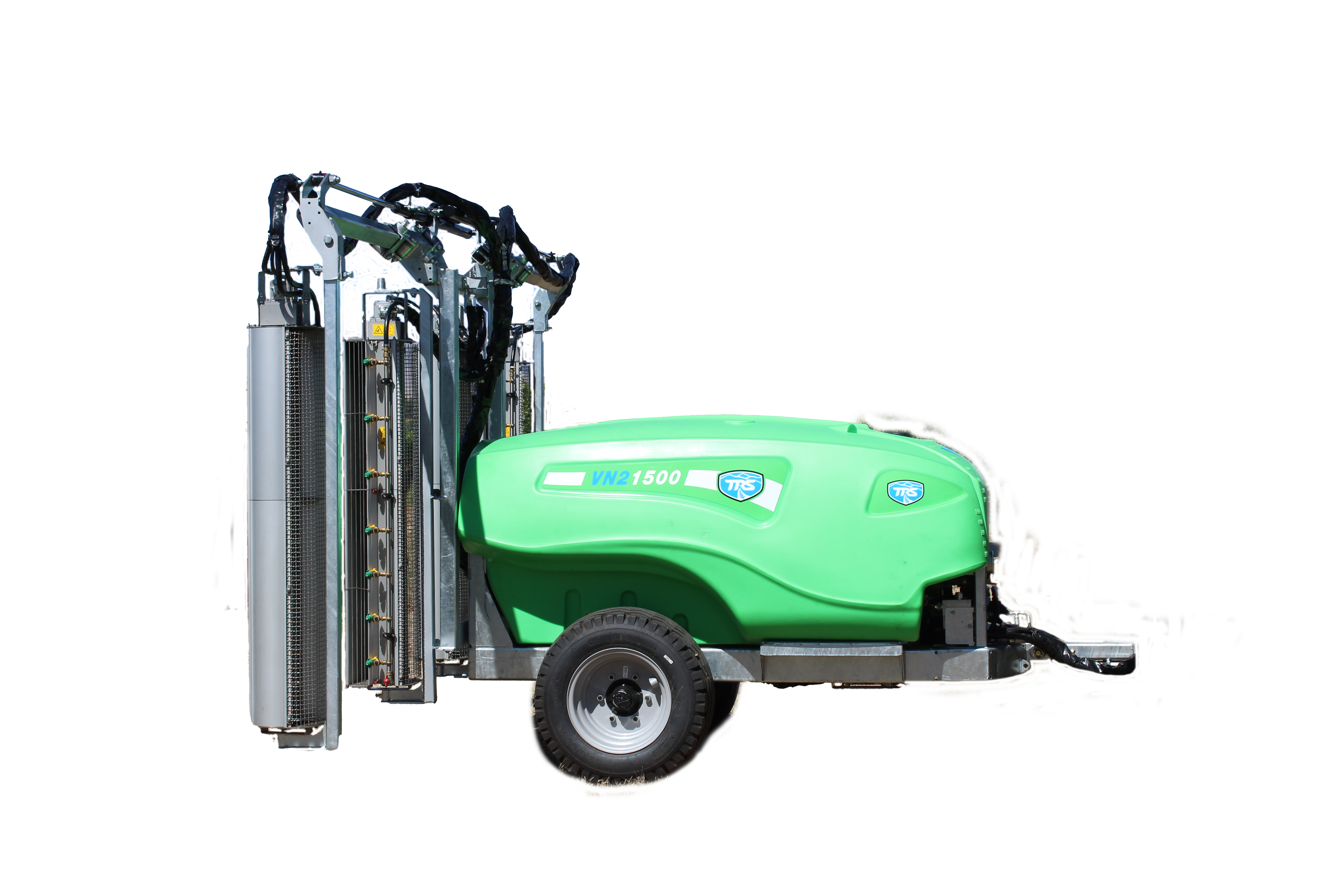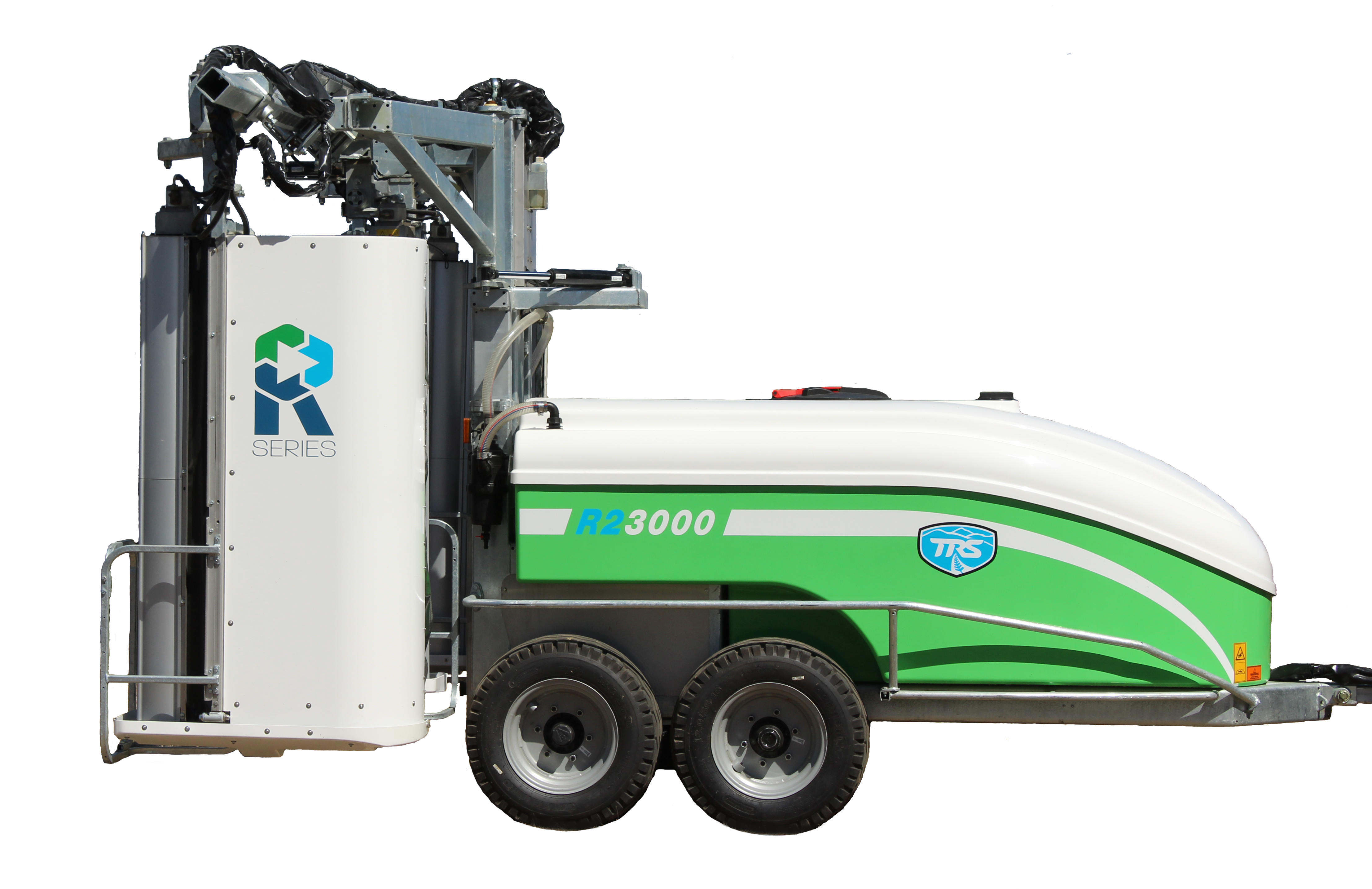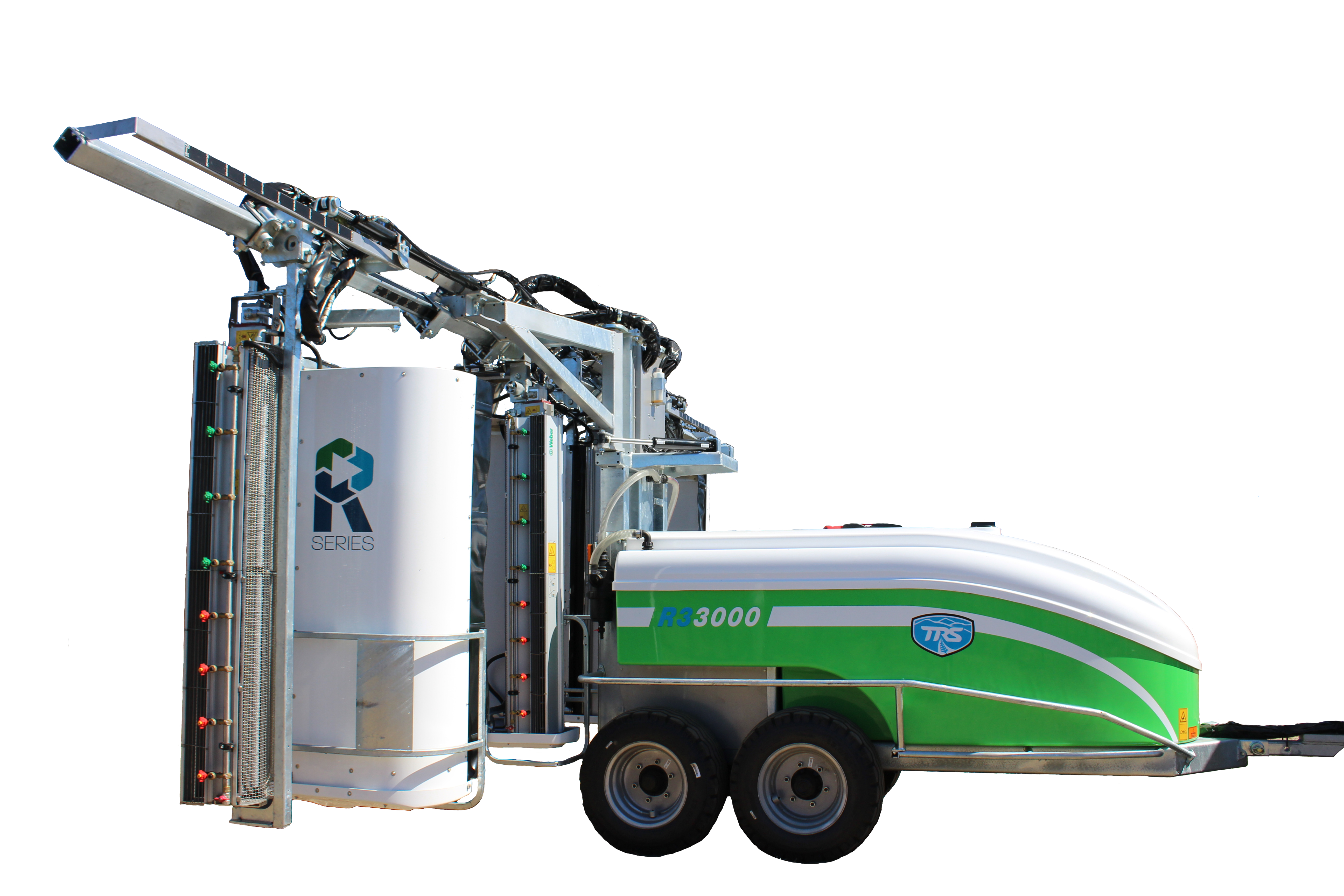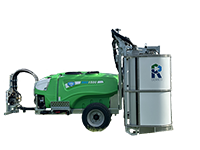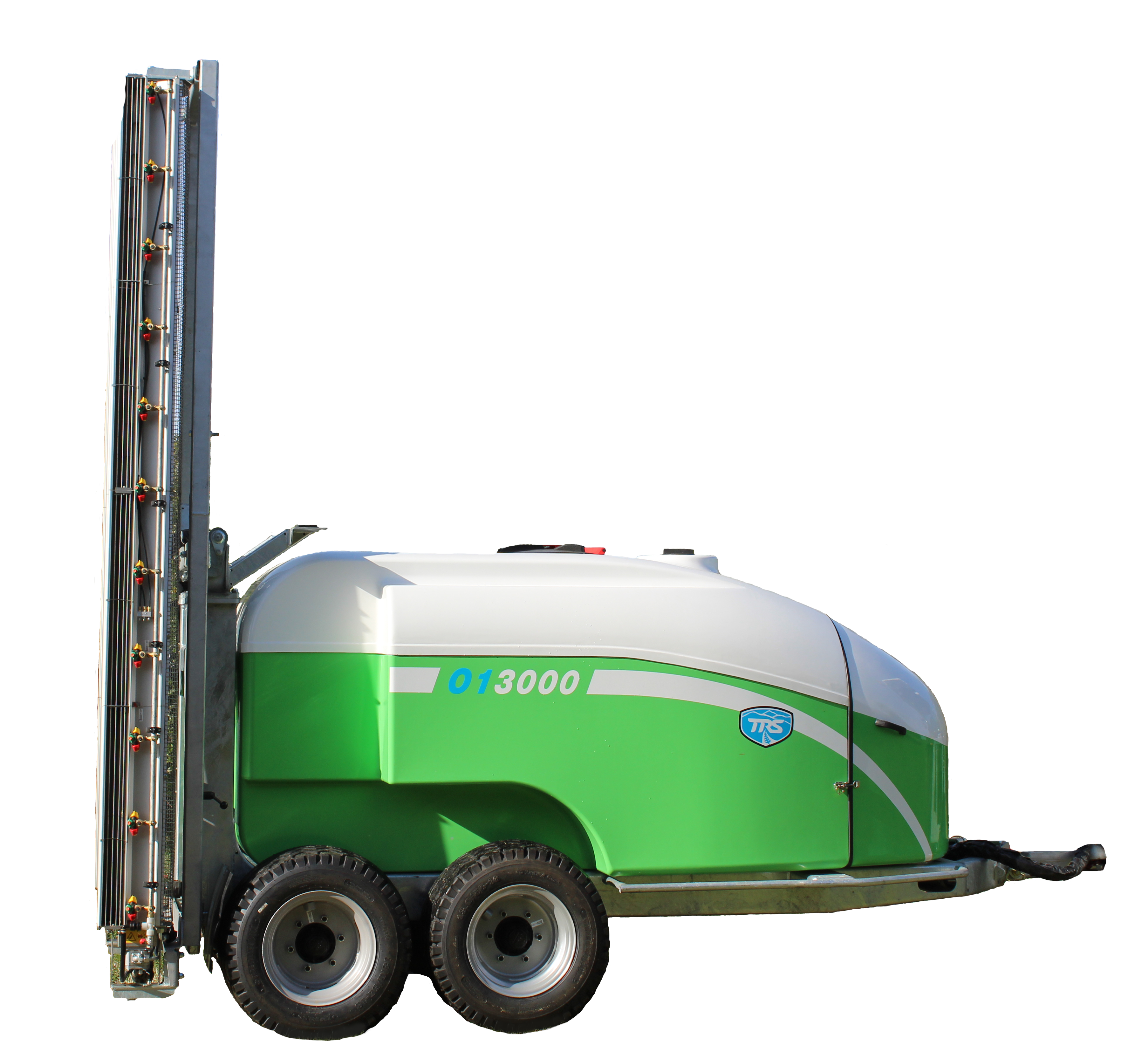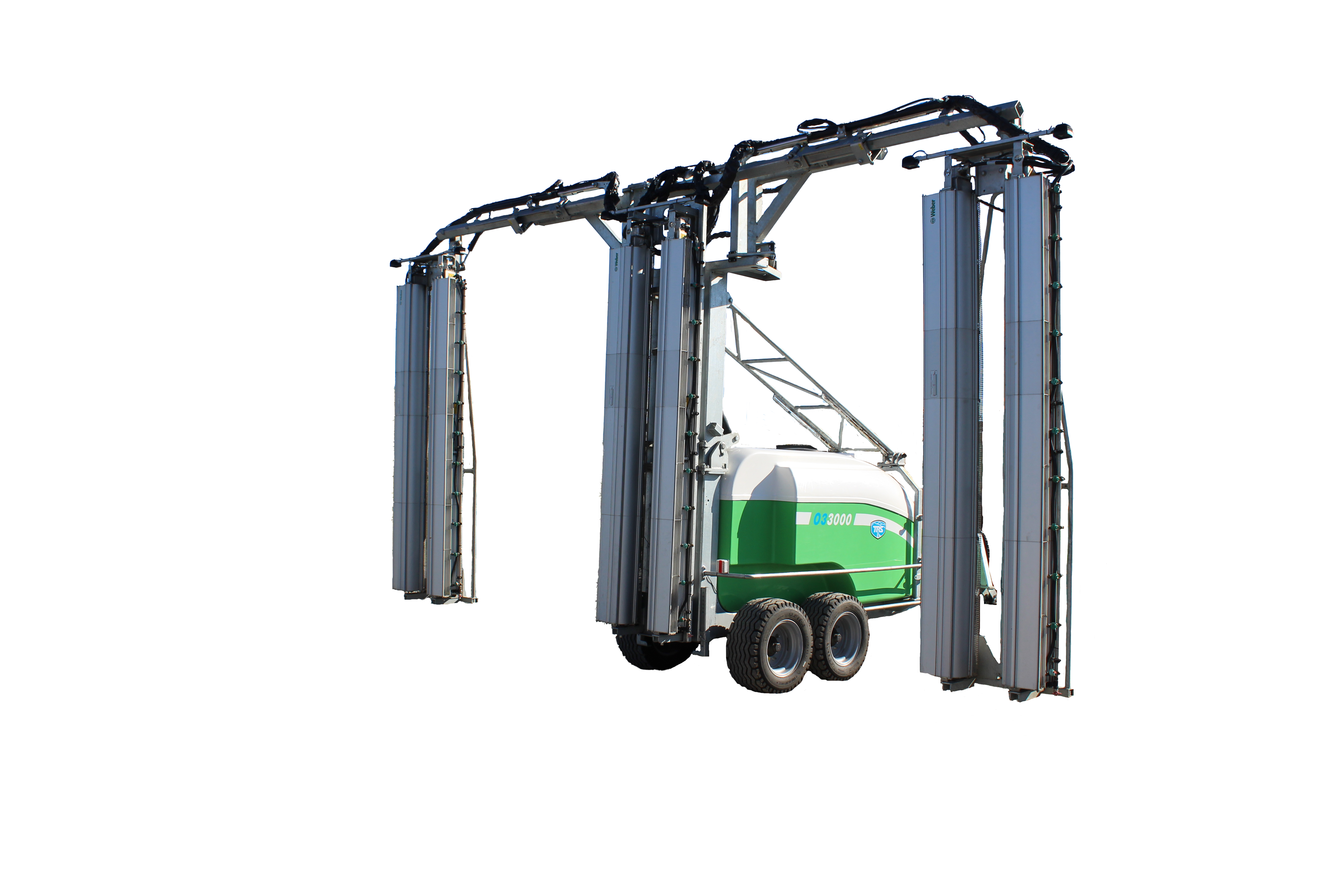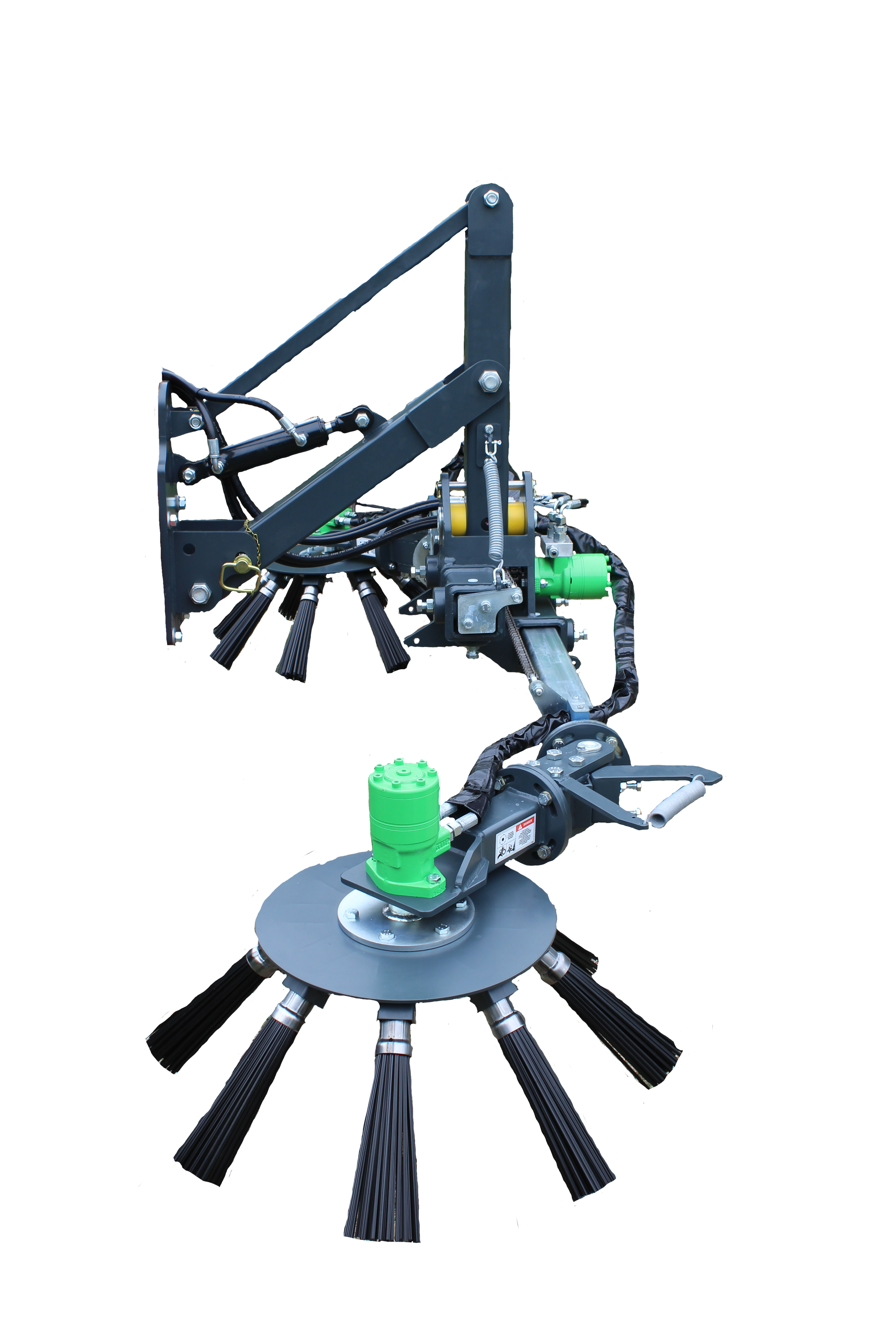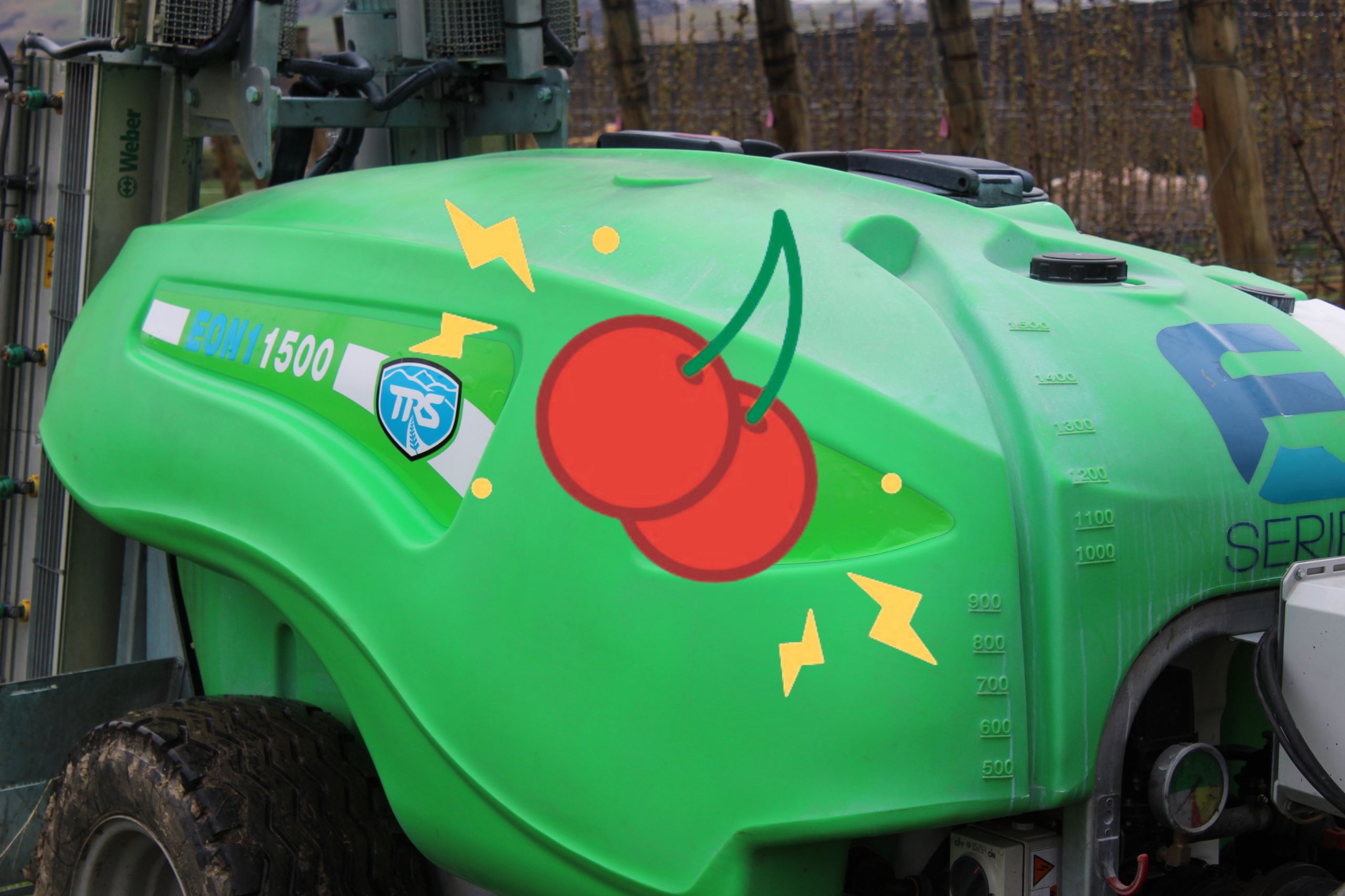When it comes to orchard spraying, air output is just as important as liquid volume. Current calibration requirements set the spray distribution, nozzle, rates and pressure to apply the right chemical rates — but if the air isn’t carrying the spray into the canopy correctly, you risk poor coverage, increased disease pressure, and wasted product.
At a recent New Zealand Apples & Pears Inc ‘Spotlight on Spraying’ field day in Hawke’s Bay, the focus was on how to optimise your sprayer setup for better spray coverage, using the TRS O1 Sprayer as one of the referenced models alongside other manufacturers air blast sprayers.
Speakers at the event included: David Manktelow (ART), Jonathon Brooks and Sean Gresham (AgFirst).

Why air output matters:
Effective spraying relies on displacing the air inside the tree canopy with spray-laden air.
- Too much air blows spray past the target, causing loss to the ground and increased drift, directly affecting the percentage of chemical retained on the targeted canopy.
- Too little air fails to push the spray to the tops of the trees, or into the centre of the canopy, leaving untreated areas unprotected and at risk of disease.
Finding, the “Goldilocks Zone” — just the right amount of air — is critical for consistent coverage and better pest and disease control.
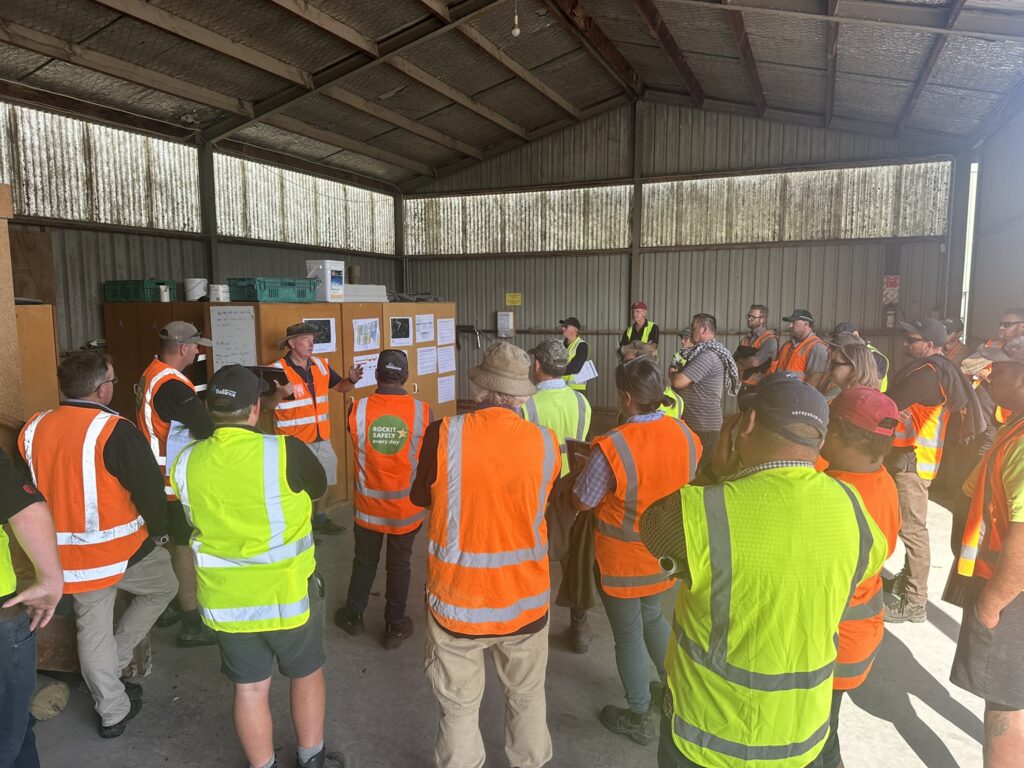
What affects air output — and how to optimise it with the TRS O1:
The TRS O1 Sprayer gives operators flexibility to fine-tune air output to match tree shape, size, and environmental conditions. Here are the main ways you can optimise performance:
1. Fan speed settings
- The TRS O1 Sprayer offers adjustable fan speeds, independent to the tractor RPM, to change air speed and volume based on the actual requirement. This allows for adjustments to suit weather conditions and varying canopy growth stages whilst retaining the application speed. eg. Selecting lower fan speeds when spraying smaller trees or on narrower rows to reduce excessive air & drift.
2. Ground speed
- Travel speed directly impacts how effectively air interacts with the canopy. The TRS O1 Sprayers hydraulically driven tangential fans allow air adjustments independent to the travel speed, maintaining air delivery and work rates. eg. For larger, denser canopies, a slower ground speed is usually needed compared to smaller less dense trees.
3. Engine RPM and pump speed
- Adjusting engine RPM on your tractor changes pump, travel and fan speed, which in turn affects air output and distribution.
4. Optimising the output and air stream by maintaining your sprayer
- Remove & flush nozzles regularly to ensure they are kept clean and debris is removed to reduce risk of blockages. Blocked nozzles will cause uneven coverage and put canopy at higher risk of pest and disease. The TRS O1 Sprayer is fitted with quick cap to allow for quick and easy removal & re-fitting.
- Clear any debris from fans to maintain optimal efficiency.
- Ensuring your filtration system (Ie. Basket filter, suction filter and pressure filter) is frequently cleaned will reduce risk of nozzle blockages.
5. Managing fan distance and angles
- The tangential style fan on the TRS O1 Sprayer ensures an even curtain of air over the trees, having fans closer to the canopy reduces the amount of air needed, ideally fans should be between 500-700mm from nozzle to outer canopy edge – this ensure optimal coverage and avoids wasting power resulting in fuel savings.
- Tip:. Our current TRS O1 setup is designed to limit unnecessary adjustments for fan angle whilst maintaining high flexibility when required.
6. Air Symmetry
- The TRS O1 delivers balanced air output to both sides of the sprayer, meaning no compromises in the application.
- Tip: Regularly check outputs during operation to ensure air is reaching all parts of the canopy.
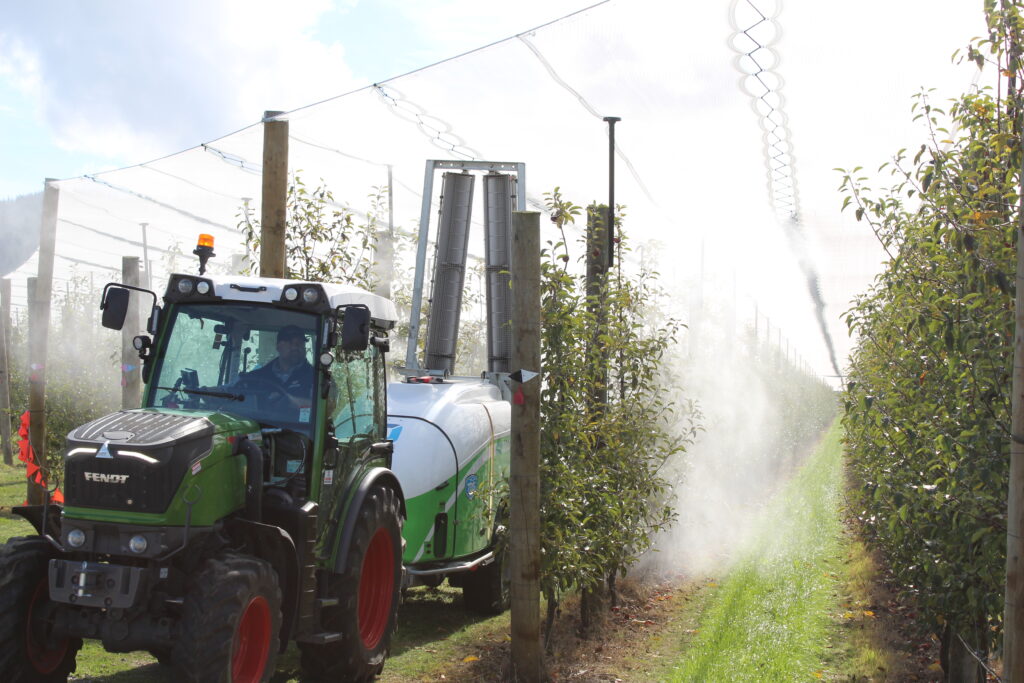
Practical Demonstrations: TRS O1 in Action:
At the event, operators saw firsthand how adjusting travel speed, fan speed, and tractor RPM on affects canopy coverage.
We demonstrated:
- How small adjustments can significantly improve penetration into dense tree canopies.
- How managing distance to the canopy with even air displacement reduces energy needs and improves spray coverage.
- Why optimising air output is just as important as adjusting spray rates.
Key takeaway:
Good spray coverage is more than just having the right spray volume and rate. It requires having the right air volume and type of air for the canopy and the spray conditions. Simply operating at full power, reduces retained deposits, increases drift, delivers uneven coverage and increases running costs.
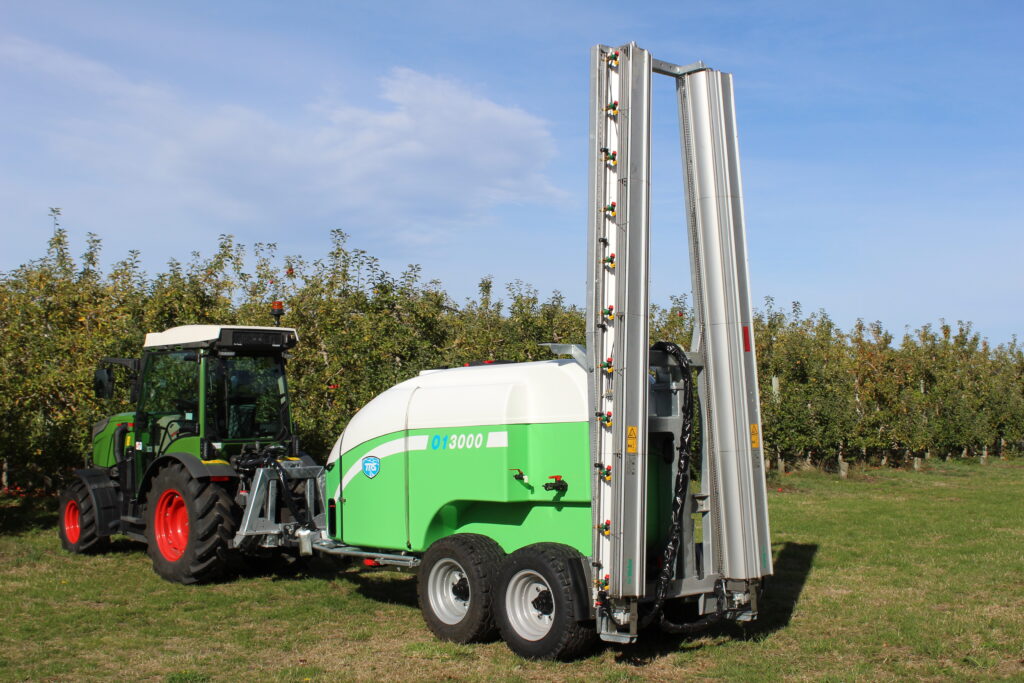
Ready to optimise your sprayer?
The TRS O1 Sprayer offers an outstanding platform for modern orchardists who want precision, efficiency, reliability and flexibility in their spraying operations.
- Learn more about the TRS O1 In-Row Orchard Sprayer and see full specifications here: https://trsequipment.co.nz/product/in-row-orchard-sprayer/
- Learn more about the TRS O3 Over-Row Orchard Sprayer and see full specifications here: https://trsequipment.co.nz/product/multi-row-orchard-sprayer/
Get in touch today with your local TRS Sprayers & Equipment dealer to arrange a demonstration or to talk about how the O1 can transform your spraying operations next season.
You can find your closest dealer here: https://trsequipment.co.nz/store-finder-feature/
